Food

Have you ever wondered where your food comes from and how different foods keep you healthy and strong?
In this guide you can find answers to these questions:
- What are the different food types?
- What is a balanced diet?
- What happens to food in your mouth?
- What happens to food in your stomach?
- Where does our food comes from?
- How do I prepare food?

Science
What are nutrients?
Humans and animals can't survive without food.
Nutrients are substances found in food that carry out important jobs in the body.
Discover the different nutrients and how they keep your body working!
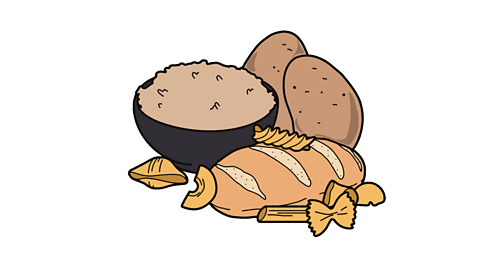
Image caption, Carbohydrate
Carbohydrate is found in foods like potatoes, bread, rice and pasta. Carbohydrate provides energy.
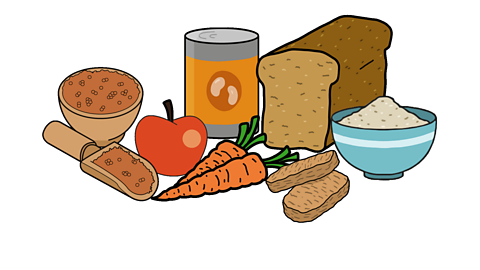
Image caption, Fibre
Fibre is found in foods like wholegrain breakfast cereal, wholemeal bread, brown rice, vegetables, fruit, beans and lentils. Fibre helps to keep the digestive system healthy.
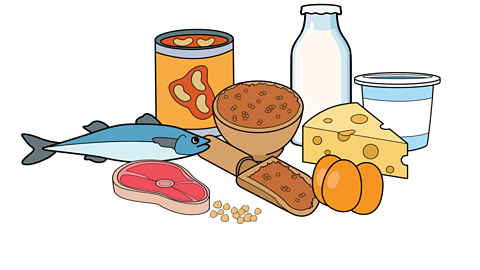
Image caption, Protein
Protein is found in foods like beans, lentils, chickpeas, fish, eggs and meat. Protein can also come from milk, cheese and yoghurt. Protein is needed for the growth and repair of muscles.
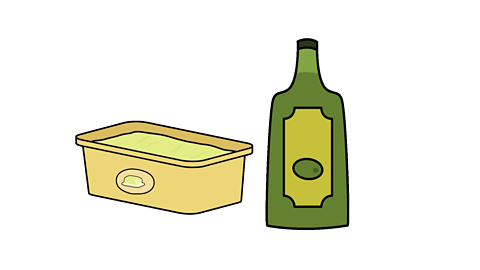
Image caption, Fat
We only need a small amount of fat to keep us healthy. There are two main types of fat: unsaturated and saturated fat. Unsaturated fat is healthier for us and it is mostly found in lower fat spreads and oils from plants, such as sunflower oil or olive oil. Saturated fat is found in foods like butter and lard. Fat helps the body to absorb some vitamins.
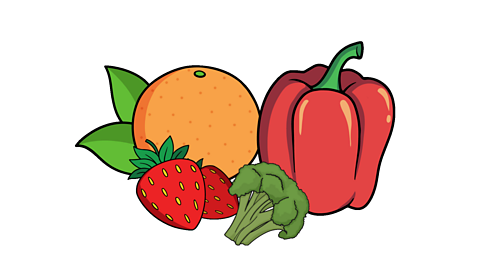
Image caption, Vitamins
There are lots of different vitamins, such as vitamin A, C, D and E. Different vitamins do different jobs in the body. Vitamin C is found in fruit and vegetables, such as oranges, strawberries, red peppers and broccoli. Vitamin C helps wounds to heal.
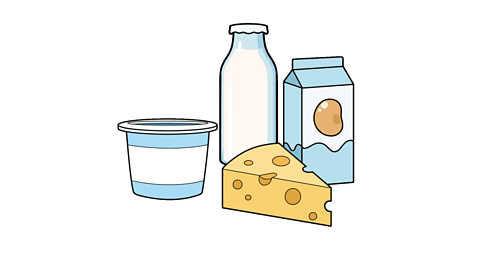
Image caption, Minerals
There are lots of different minerals, such as calcium, iron and zinc. Different minerals do different jobs in the body. Calcium can be found in foods like milk, cheese and yoghurt. Calcium can also be found in dairy alternatives, such as soya drinks if they have calcium added. Calcium helps to build strong bones and teeth.
1 of 6
What are nutrients?
Bitesize KS2: Design and Technology -

What are food choices?
Bitesize KS2: Design and Technology - Cooking and Nutrition
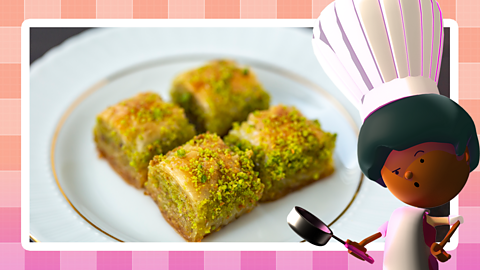
Why do people need energy?
Bitesize KS2: Design and Technology - Cooking and Nutrition
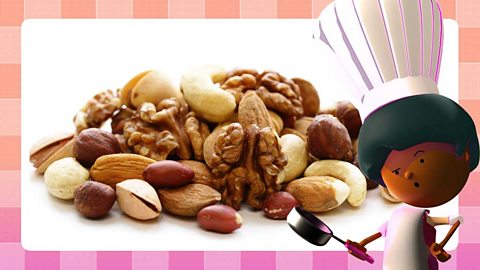
What happens to food in the human body?
What happens to food after it has been eaten?
Find out more about the incredible journey food goes on through the human body.
What is a balanced diet?
Bitesize KS2: The World Around Us - The Human Body

What happens to food in your mouth?
Bitesize KS2: The World Around Us - The Human Body
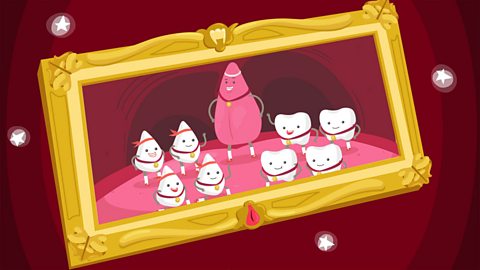
What is the digestive system?
Bitesize KS2: The World Around Us - The Human Body
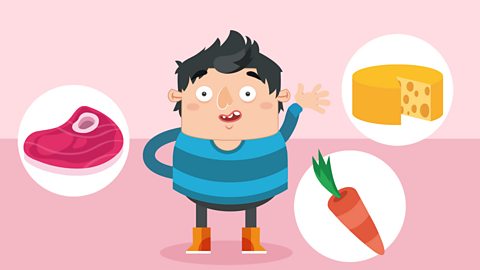
Activity: Quiz
Geography
Where does our food come from?
The food you eat has usually been on an incredible journey before reaching your plate.
Here in the UK, some of our food comes from farms. This includes foods such as:
- Vegetables
- Fruits
- Meat
- Eggs
- Wheat
Not all food can grow in the United Kingdom because of the climate so lots of foods are imported from other countries. For example, bananas are grown in warmer countries like Costa Rica.

Image caption, The food we eat is transported from farms to factories, where it is sorted and sometimes made into a different product. Some foods, such as potatoes or apples look the same as they were at the farm.
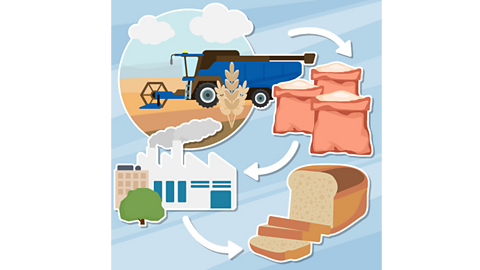
Image caption, Other food gets processed in factories and is used to make a new product. For example, wheat is processed to make flour and is used to make bread, and milk is made into cheese.

Image caption, Some foods such as milk and tinned vegetables are processed in factories to stop it from spoiling.
1 of 3
Exploring food and farming in the UK
Bitesize KS2: The World Around Us - Geography in the UK
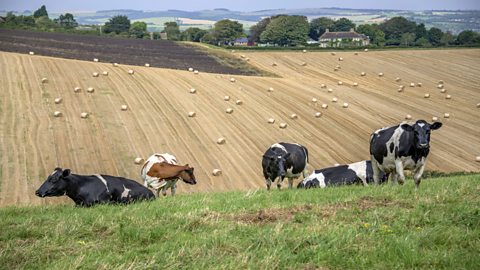
Growing food around the world
Bitesize KS2: Design and Technology - Food and Nutrition
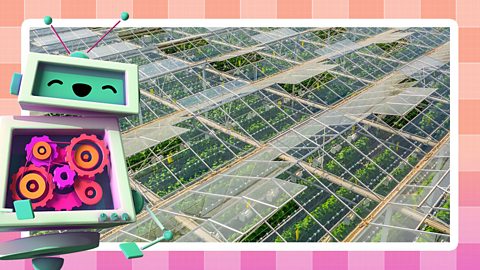
Farm to plate
Bitesize KS2: Health and wellbeing - Food and health

Food and the environment
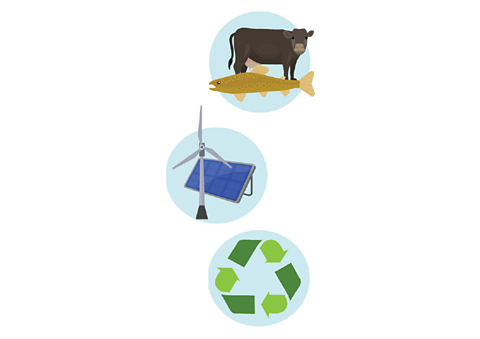
Producing food uses natural resources like water and energy, and food that travels long distances can harm the environment.
1. Seasonal Food
Foods like tomatoes only grow in the UK during the warmer summer months. So when it is colder, they are flown in from other countries.
2. Food Miles
Food miles are how far food travels. The longer food travels, the more pollution it causes. Local, seasonal food is better for the planet.
3. Food Waste
Throwing food away wastes resources like water and energy. It’s bad for the environment when food goes to landfill.
How can we help?
- Eat local and seasonal food.
- Buy only what you need to avoid waste.
- Compost food scraps instead of throwing them away.
Small changes in how we buy and use food can help protect the environment!

Sustainable Food
Bitesize 2nd level: Health and wellbeing - Food and health
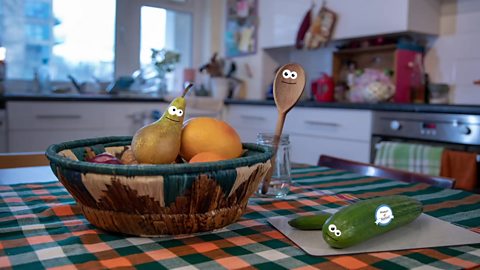
Seasonal food
Bitesize 2nd level: Health and wellbeing - Food and health
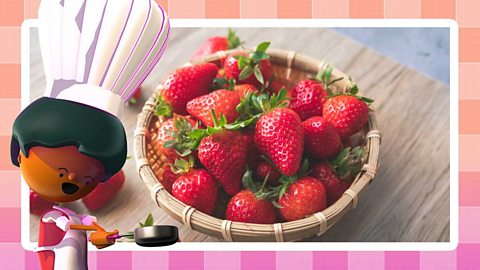
Food waste
Bitesize 2nd level: Health and wellbeing - Food and health
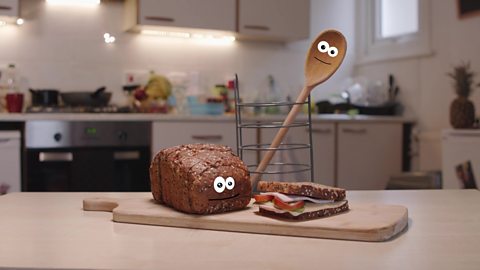
Design and Technology
Cooking and nutrition
Learning to cook is an important life skill.
Here are lots of useful tips for preparing and cooking food.
Make sure that you are with an adult when preparing food.
Storing food safely
Bitesize KS2: Design and Technology - Cooking and Nutrition
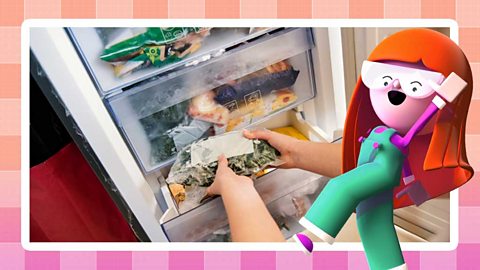
Why is taste so important?
Bitesize KS2: Design and Technology - Cooking and nutrition
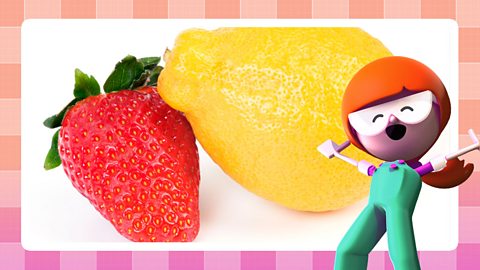
Measuring different ingredients
Bitesize KS2: Design and Technology - Cooking and Nutrition
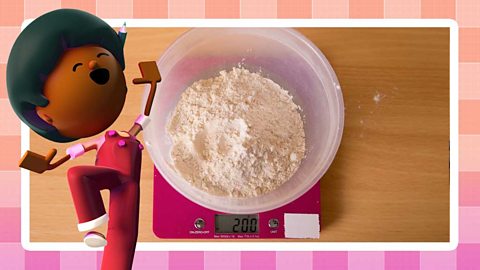
Cutting and slicing food safely
Bitesize KS2: Design and Technology - Cooking and Nutrition
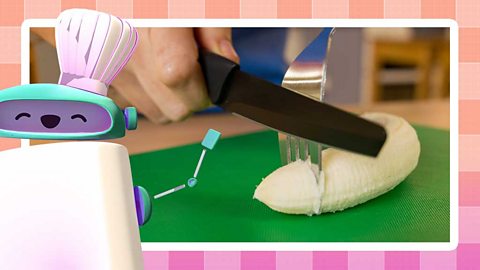
Peeling and grating safely
Bitesize KS2: Design and Technology - Cooking and Nutrition
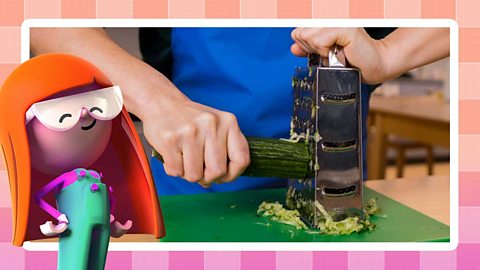
Cooking safely with heat
Bitesize KS2: Design and Technology - Cooking and Nutrition
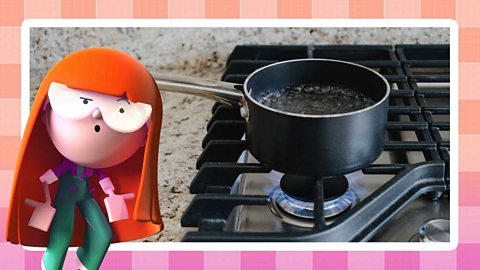
Art
Food presentation
Food presentation plays an important role in cooking and baking.
When we decide if food is delicious, we don't just rely on our sense of taste.
Smell: The smell of food can make us excited to eat it. Our noses help us sense whether something smells yummy or not.
Sight: We also use our eyes to see if food looks appealing. Bright colours, a nice presentation, or the way food is cooked can all make it look delicious before we even take a bite.
Activity: Make and decorate cupcakes
Baking is a great way to spend time with family and friends and get creative!
Cupcakes are often decorated with:
- Icing
- Fruit and nuts
- Chocolate
Always have an adult to help you when baking and cooking.
Cupcakes
BBC Food
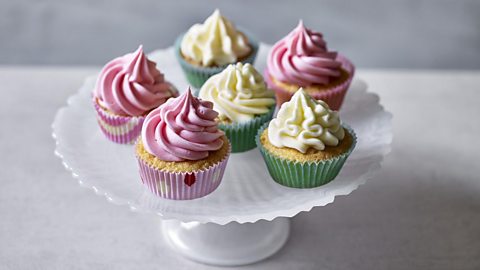
Christmassy cupcake ideas
Bitesize Parent's Toolkit
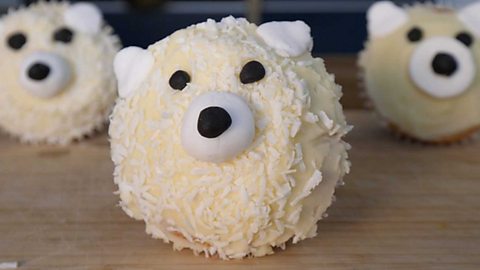
Food in art
Food often appears in art.
When an artist paints food or everyday objects in a realistic way, we call this a still life.
There are lots of artists who are famous for their still life paintings. For example, Paul Cézanne painted expressive and colourful fruit and fruit bowls.
Learn about Paul Cézanne and his still life paintings
Bitesize KS2: Design and Technology - Cooking and Nutrition
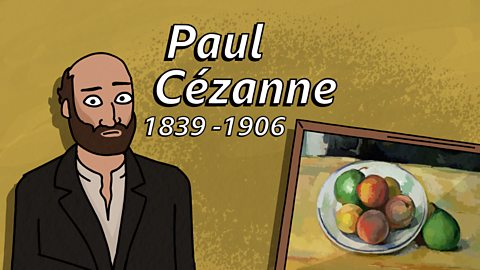
Close up photography
Bitesize KS2: Art and Design
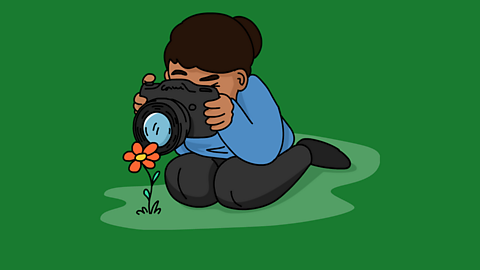
Activity: Paint your own still life
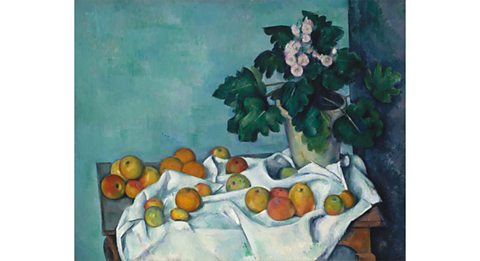
You will need:
- Poster or acrylic paints
- Water
- Paint brush
- Palette or paper plate to mix your paints on
- Fruit such as apples or oranges and lemons
Painting tips
Gather some fruit such as apples, oranges and lemons.
Arrange them in a bowl or on a cloth.
Draw the outline of the fruit with a pencil first.
Choose vibrant colours like Paul Cézanne.
Food from around the world
Food from around the world comes in many different styles and flavours, like spicy tacos from Mexico or sweet sushi from Japan. Trying foods from different countries helps us learn about other cultures and enjoy new tastes!
Talking about food and drink in French
Bitesize KS2: French
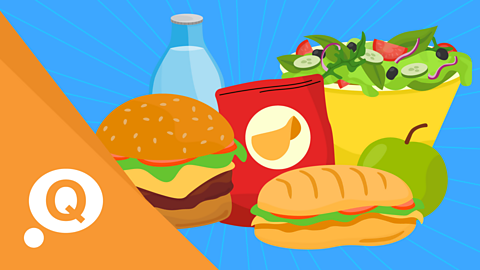
Eating out in French
Bitesize KS2: French
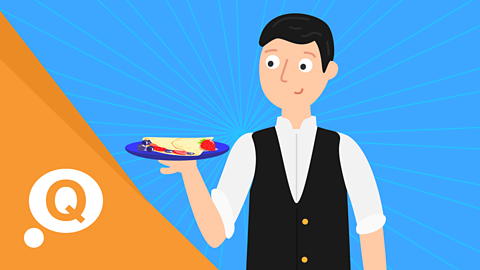
French recipes
Bitesize KS2: French

Talking about food and drink in Spanish
Bitesize KS2: Spanish
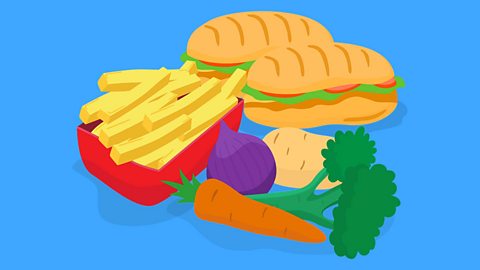
Spanish recipes
Bitesize KS2: Spanish
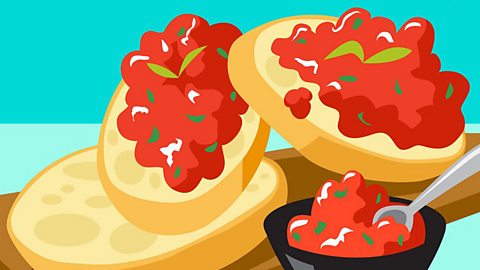
Play: Operation Ouch: It take guts
Welcome to the human digestive system with Dr Chris, Dr Xand and Dr Ronx!
Discover how the human body munches, crunches and breaks down the food that we eat so that it can be turned into energy.
Operation Ouch: It Takes Guts!
Bitesize KS2: Science - Games

Where next?
Primary Topic Packs
Discover topics, events and project packs for children in KS1 and KS2.
